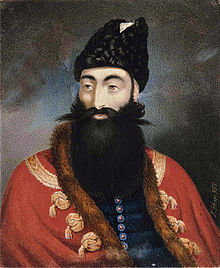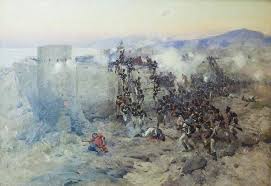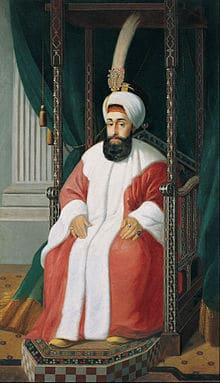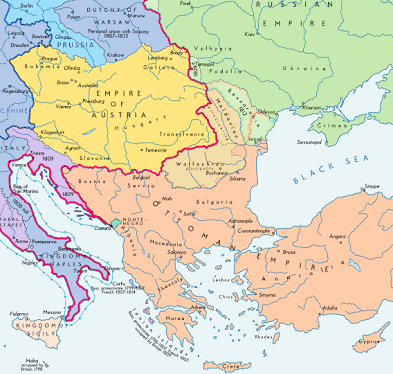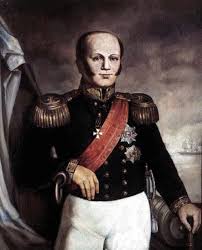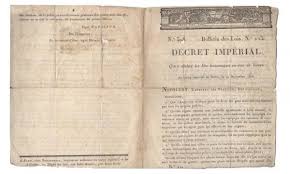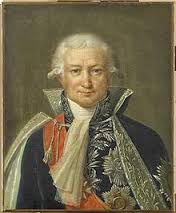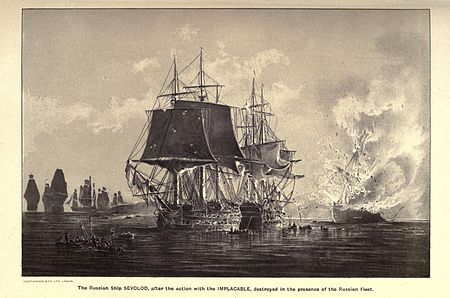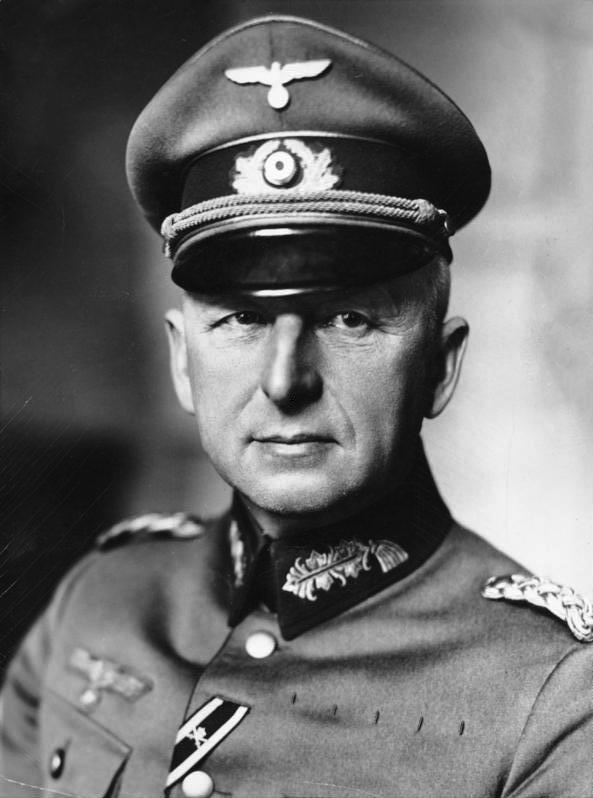Post by Laurent de Gouvion on Sept 11, 2016 0:27:12 GMT
I'll be doing a presentation on Napoleon's most famous defeat: the Russian Expedition.
Why am I doing this? Two reasons:
1) To dispel the myth that the Russian Expedition was absolutely idiotic.
2) To give a backdrop on history decades later.
So let's start.
Background - The Treaty of Tilsit
"His Majesty the Emperor of the French, King of Italy, Protector of the Confederation of the Rhine and His Majesty the Emperor of all the Russias, being prompted by an equal desire to put an end to the calamities of war. . . ."
-Preamble of the Peace of Tilsit.
Emperor Alexander I ruled Russia during the Napoleonic Wars. France had gone to war with Russia in 1805, after furious diplomacy by Britain at the Third Coalition. Russia was an absolute monarchy, which was in a sense still threatened by revolutionary ideas imparted in the Code Napoléon. Russia was also keen on keeping the balance of power which Napoleon had violated. Napoleon had executed thr Duc d'Enghien and added Northern Italy into his territories.
As we all know, the Russian armies were destroyed at Austerlitz in what was Napoleon's greatest victory. The Russians didn't sue for peace however, they merely retreated. The Treaty of Pressburg was only between France and the HRE. The Third Coalition effectively ended here. However, after this time Naples was invaded succesfully by Massena after the Russians withdrew.
This was due to the Russian military having no effective structure after the regiment. Because of this, larger structures of brigades and columns were of incredibly varying strength, different from a corps which had the numbers of a small army. The Russians themselves didn't receive much training. In their yearly training exercises, Russians were only issued 6 or less bullets (the British line were issued 30). Some even had to fire clay bullets. The Russians were also only led by nobles. While some were skilled like Golitsyn, Kutuzov, or Bagration a lot would rather be in court than at war.
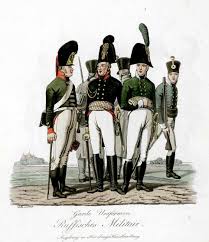

Left: Russian army 1805
Right: Austerlitz
In 1806, the War of the Fourth Coalition started when Prussia declared war on France. The Prussians were destoryed at Jena-Auerstadt and there were further Prussian capitulations at Lubeck, Magdeburg, Prenzlau, Sttetin, and other forts. In the end of 1806, Napoleon entered Poland and established the Duchy of Warsaw. By 1807, only the fortress of Danzig had not surrendered.
Napoleon issued the Berlin Decree in 1806, essentially marking the start of the Continental System.
In Poland, Napoleon faced a new Russian army. Gone was the ineffective structure of the army. The Russian army had numbered divisions, adding efficiency into their army. Napoleon also faced unfamilliar weather here, exceptionally cold winters.
The Russians fought the battles of Pultusk and Golymin in December, succesfully retreating. In January, the Russians under Bennigsen conducted an offensive into East Prussia. Napoleon planned to encircle them. However, a cossack intercepted these orders and Bennigsen retreated. Then came the bloody Battle of Eylau.
"What a massacre! And without result,"
-Marshal Ney after Eylau.
Eylau was a bloody action, Augereau's corps was nearly destoryed there. To save the situation, he ordered a 10,000 man cavalry charge, one very large at that time. It was the first check to the Grande Armée's invicibility.
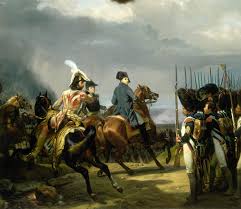

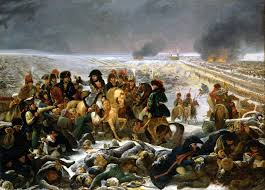

Top: Napoleon at Jena
Top Middle: Napoleon entering Berlin
Top Bottom: Battle of Eylau
Bottom: Cavalry charge at Eylau
Both armies settled for winter. At the winter thaw, Napoleon went on the offensive for Konigsberg, the temporary capital of Russia. Danzig was also taken, leaving room for the attacked.
However, Bennigsen attacked first. He attaclrd Ney, Soult, and Bernadotte. The Russians wrte unable to acheieve a decisivu victory, all Marshals inflicting more casualties at the Russians, especially Ney with his odds of 17,000 to 63,000.
On 7 June, Bennigsen retreated. Napoleon caught him at Heilsberg on 10 June, initially thinking it was only their rearguard. It was a slaughter for the French. On 14 June, Bennigsen attacked Lannes at Friedland. Napoleon destroyed Bennigsen's army here and on the same day Soult occupied Konigsberg.
The Russians sued for peace, and on 7 July Napoleon met with Alexander on the river Niemen. Peace was made at last. France entered an alliance with Russia. No continental power resisted Napoleon at that time.
"There shall be, dating from the day of the exchange of the ratifications of the present treaty, perfect peace and amity between His Majesty the Emperor of the French, King of Italy, and His Majesty the Emperor of all the Russias."
-Article 1 of the Treaty of Tilsit.
Napoleon formed the Grand Duchy of Warsaw, the Kingdom of Westphalia, and the Free City of Danzig from Prussian territories. It was very hard on Prussia, as it lost half its territory. Talleyrand himself advised against it.
Russia had to withdraw from Wallachia and Moldavia. They also ceded the Ionian Islands and joined the Continental System against Britain. This led some officers who had close relationships with Britain (Admirals who had served in the Mediterranian for example) to disobey some orders.

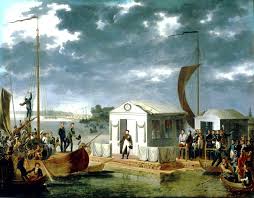
Top: Battle of Friedland
Bottom: Treaty of Tilsit
(Next will talk about the interbellum period)
Why am I doing this? Two reasons:
1) To dispel the myth that the Russian Expedition was absolutely idiotic.
2) To give a backdrop on history decades later.
So let's start.
Background - The Treaty of Tilsit
"His Majesty the Emperor of the French, King of Italy, Protector of the Confederation of the Rhine and His Majesty the Emperor of all the Russias, being prompted by an equal desire to put an end to the calamities of war. . . ."
-Preamble of the Peace of Tilsit.
Emperor Alexander I ruled Russia during the Napoleonic Wars. France had gone to war with Russia in 1805, after furious diplomacy by Britain at the Third Coalition. Russia was an absolute monarchy, which was in a sense still threatened by revolutionary ideas imparted in the Code Napoléon. Russia was also keen on keeping the balance of power which Napoleon had violated. Napoleon had executed thr Duc d'Enghien and added Northern Italy into his territories.
As we all know, the Russian armies were destroyed at Austerlitz in what was Napoleon's greatest victory. The Russians didn't sue for peace however, they merely retreated. The Treaty of Pressburg was only between France and the HRE. The Third Coalition effectively ended here. However, after this time Naples was invaded succesfully by Massena after the Russians withdrew.
This was due to the Russian military having no effective structure after the regiment. Because of this, larger structures of brigades and columns were of incredibly varying strength, different from a corps which had the numbers of a small army. The Russians themselves didn't receive much training. In their yearly training exercises, Russians were only issued 6 or less bullets (the British line were issued 30). Some even had to fire clay bullets. The Russians were also only led by nobles. While some were skilled like Golitsyn, Kutuzov, or Bagration a lot would rather be in court than at war.


Left: Russian army 1805
Right: Austerlitz
In 1806, the War of the Fourth Coalition started when Prussia declared war on France. The Prussians were destoryed at Jena-Auerstadt and there were further Prussian capitulations at Lubeck, Magdeburg, Prenzlau, Sttetin, and other forts. In the end of 1806, Napoleon entered Poland and established the Duchy of Warsaw. By 1807, only the fortress of Danzig had not surrendered.
Napoleon issued the Berlin Decree in 1806, essentially marking the start of the Continental System.
In Poland, Napoleon faced a new Russian army. Gone was the ineffective structure of the army. The Russian army had numbered divisions, adding efficiency into their army. Napoleon also faced unfamilliar weather here, exceptionally cold winters.
The Russians fought the battles of Pultusk and Golymin in December, succesfully retreating. In January, the Russians under Bennigsen conducted an offensive into East Prussia. Napoleon planned to encircle them. However, a cossack intercepted these orders and Bennigsen retreated. Then came the bloody Battle of Eylau.
"What a massacre! And without result,"
-Marshal Ney after Eylau.
Eylau was a bloody action, Augereau's corps was nearly destoryed there. To save the situation, he ordered a 10,000 man cavalry charge, one very large at that time. It was the first check to the Grande Armée's invicibility.




Top: Napoleon at Jena
Top Middle: Napoleon entering Berlin
Top Bottom: Battle of Eylau
Bottom: Cavalry charge at Eylau
Both armies settled for winter. At the winter thaw, Napoleon went on the offensive for Konigsberg, the temporary capital of Russia. Danzig was also taken, leaving room for the attacked.
However, Bennigsen attacked first. He attaclrd Ney, Soult, and Bernadotte. The Russians wrte unable to acheieve a decisivu victory, all Marshals inflicting more casualties at the Russians, especially Ney with his odds of 17,000 to 63,000.
On 7 June, Bennigsen retreated. Napoleon caught him at Heilsberg on 10 June, initially thinking it was only their rearguard. It was a slaughter for the French. On 14 June, Bennigsen attacked Lannes at Friedland. Napoleon destroyed Bennigsen's army here and on the same day Soult occupied Konigsberg.
The Russians sued for peace, and on 7 July Napoleon met with Alexander on the river Niemen. Peace was made at last. France entered an alliance with Russia. No continental power resisted Napoleon at that time.
"There shall be, dating from the day of the exchange of the ratifications of the present treaty, perfect peace and amity between His Majesty the Emperor of the French, King of Italy, and His Majesty the Emperor of all the Russias."
-Article 1 of the Treaty of Tilsit.
Napoleon formed the Grand Duchy of Warsaw, the Kingdom of Westphalia, and the Free City of Danzig from Prussian territories. It was very hard on Prussia, as it lost half its territory. Talleyrand himself advised against it.
Russia had to withdraw from Wallachia and Moldavia. They also ceded the Ionian Islands and joined the Continental System against Britain. This led some officers who had close relationships with Britain (Admirals who had served in the Mediterranian for example) to disobey some orders.


Top: Battle of Friedland
Bottom: Treaty of Tilsit
(Next will talk about the interbellum period)





